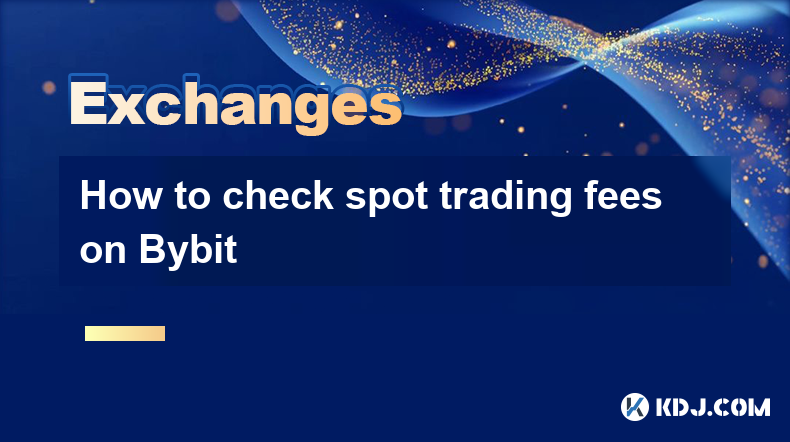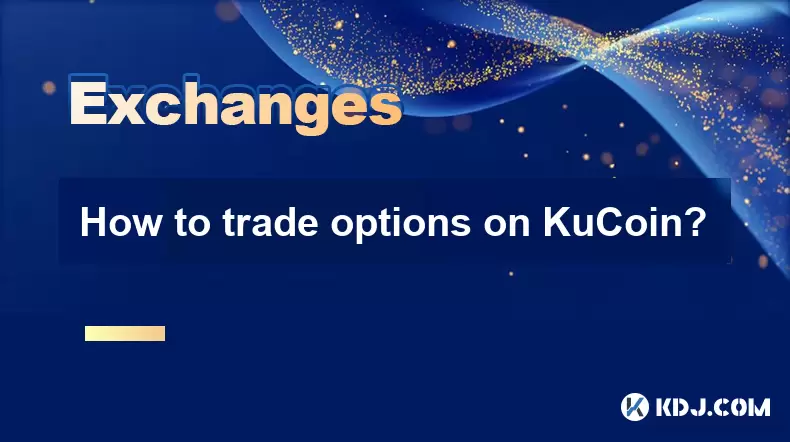-
 Bitcoin
Bitcoin $117400
-0.46% -
 Ethereum
Ethereum $3768
0.60% -
 XRP
XRP $3.551
2.09% -
 Tether USDt
Tether USDt $1.000
0.00% -
 Solana
Solana $203.2
11.30% -
 BNB
BNB $770.9
1.92% -
 USDC
USDC $0.9999
0.01% -
 Dogecoin
Dogecoin $0.2709
-0.02% -
 Cardano
Cardano $0.9024
4.49% -
 TRON
TRON $0.3139
0.60% -
 Hyperliquid
Hyperliquid $45.60
-1.41% -
 Stellar
Stellar $0.4730
-1.34% -
 Sui
Sui $4.025
2.15% -
 Chainlink
Chainlink $19.79
2.19% -
 Hedera
Hedera $0.2724
-2.39% -
 Avalanche
Avalanche $25.93
3.05% -
 Bitcoin Cash
Bitcoin Cash $524.0
-1.83% -
 Shiba Inu
Shiba Inu $0.00001558
0.50% -
 Litecoin
Litecoin $116.7
-0.30% -
 UNUS SED LEO
UNUS SED LEO $8.996
0.00% -
 Toncoin
Toncoin $3.334
1.83% -
 Polkadot
Polkadot $4.506
0.34% -
 Uniswap
Uniswap $10.99
4.83% -
 Ethena USDe
Ethena USDe $1.001
0.03% -
 Pepe
Pepe $0.00001461
3.17% -
 Monero
Monero $320.3
-1.01% -
 Bitget Token
Bitget Token $4.935
0.36% -
 Dai
Dai $0.9998
0.00% -
 Aave
Aave $322.4
-1.25% -
 Bittensor
Bittensor $455.6
9.33%
How to check spot trading fees on Bybit
To check spot trading fees on Bybit, log in, navigate to the 'Fees' section, and select 'Spot Trading Fees' to view maker and taker rates for different crypto pairs.
Apr 05, 2025 at 10:14 pm

Spot trading fees are a crucial aspect to consider when engaging in cryptocurrency trading on platforms like Bybit. Understanding how to check these fees can help traders make more informed decisions and potentially save on costs. Bybit, a popular cryptocurrency exchange, offers a variety of trading options, including spot trading, where users can buy and sell cryptocurrencies at the current market price. To effectively navigate Bybit's fee structure, it's essential to know where to look and how to interpret the information provided. This article will guide you through the process of checking spot trading fees on Bybit, ensuring you have all the necessary information at your fingertips.
Understanding Bybit's Fee Structure
Before diving into how to check spot trading fees, it's important to understand the basics of Bybit's fee structure. Bybit charges fees for both makers and takers in spot trading. A maker fee is applied when you add liquidity to the market by placing an order that does not immediately get filled, while a taker fee is charged when you take liquidity from the market by placing an order that gets filled immediately. Bybit's fee rates can vary based on your trading volume and the specific cryptocurrency pair you are trading. It's crucial to be aware of these distinctions to better manage your trading costs.
Accessing the Fee Information on Bybit
To check the spot trading fees on Bybit, you first need to access the platform. Here's how you can do it:
- Log into your Bybit account: If you don't have an account, you'll need to create one.
- Navigate to the 'Fees' section: This can usually be found in the footer of the Bybit website or in the settings menu of the Bybit app.
- Select 'Spot Trading Fees': Within the 'Fees' section, you should see an option specifically for spot trading fees.
Once you're in the right section, you'll be able to view the current fee rates for spot trading.
Viewing Spot Trading Fees
After navigating to the 'Spot Trading Fees' section, you'll see a table or list displaying the fee rates for different cryptocurrency pairs. Here's what you should look for:
- Maker and Taker Fees: These will be listed separately, showing the percentage charged for each type of order.
- Cryptocurrency Pairs: Fees can vary depending on the pair you're trading, so make sure to check the specific pair you're interested in.
- Volume Tiers: Bybit often offers reduced fees for users who trade larger volumes. Look for any volume-based discounts that might apply to your trading activity.
Interpreting the Fee Information
Understanding the fee information is crucial for effective trading. Here are some key points to consider:
- Compare Maker and Taker Fees: Generally, maker fees are lower than taker fees. If possible, try to place orders that add liquidity to the market to benefit from lower maker fees.
- Check for Promotions: Bybit occasionally runs promotions that can reduce trading fees. Keep an eye out for any ongoing promotions that might apply to your spot trading.
- Understand Volume Tiers: If you're a high-volume trader, you might qualify for lower fees. Calculate your trading volume to see if you can move to a lower fee tier.
Using the Bybit API to Check Fees
For more advanced users, Bybit offers an API that can be used to programmatically check spot trading fees. Here's how you can use it:
- Access the Bybit API Documentation: You can find this on the Bybit website under the 'API' section.
- Use the 'Get Fee Rates' Endpoint: This endpoint will return the current fee rates for spot trading. You'll need to specify the cryptocurrency pair you're interested in.
- Integrate the API into Your Trading System: Once you have the fee rates, you can integrate them into your trading algorithms to optimize your trading strategy.
Monitoring Fee Changes
Bybit's fee structure can change over time, so it's important to stay updated. Here are some tips for monitoring fee changes:
- Regularly Check the 'Fees' Section: Make it a habit to check the 'Fees' section on Bybit's website or app periodically.
- Subscribe to Bybit's Newsletter: Bybit often announces fee changes through their newsletter. Subscribing can help you stay informed.
- Follow Bybit on Social Media: Bybit's official social media accounts can also be a good source of information about fee changes.
Strategies to Minimize Spot Trading Fees
Minimizing spot trading fees can significantly impact your overall trading profitability. Here are some strategies to consider:
- Trade in Larger Volumes: If you can increase your trading volume, you might qualify for lower fee tiers.
- Use Limit Orders: Placing limit orders can help you benefit from lower maker fees.
- Take Advantage of Promotions: Keep an eye out for any fee reduction promotions Bybit might offer.
- Consider Trading Less Liquid Pairs: Sometimes, less liquid pairs have lower fees. However, be cautious as they can also be more volatile.
Comparing Bybit's Fees with Other Exchanges
It's always a good idea to compare Bybit's fees with those of other exchanges. Here's how you can do it:
- Research Other Exchanges: Look at the fee structures of other popular exchanges like Binance, Coinbase, and Kraken.
- Compare Maker and Taker Fees: Make sure to compare both maker and taker fees across different platforms.
- Consider Other Factors: Fees are just one aspect of an exchange. Also consider factors like security, user interface, and available trading pairs.
Using Bybit's Fee Calculator
Bybit offers a fee calculator that can help you estimate the fees for your trades. Here's how to use it:
- Navigate to the Fee Calculator: This can usually be found in the 'Fees' section of Bybit's website.
- Enter Your Trade Details: Input the cryptocurrency pair, trade amount, and whether it's a maker or taker order.
- Calculate the Fees: The calculator will show you the estimated fees for your trade.
Understanding the Impact of Fees on Your Trading
Fees can have a significant impact on your trading profitability. Here's how to understand and manage this impact:
- Calculate the Total Cost: Always factor in the fees when calculating the total cost of your trades.
- Monitor Your Trading Performance: Keep track of how fees are affecting your overall trading performance.
- Adjust Your Strategy: If fees are eating into your profits, consider adjusting your trading strategy to minimize them.
Common Questions About Checking Spot Trading Fees on Bybit
Q: How often do Bybit's spot trading fees change?
A: Bybit's spot trading fees can change periodically, but they typically remain stable for extended periods. It's a good practice to check the 'Fees' section regularly to stay updated on any changes.
Q: Can I reduce my spot trading fees on Bybit?
A: Yes, you can reduce your spot trading fees on Bybit by trading in larger volumes to qualify for lower fee tiers, using limit orders to benefit from maker fees, and taking advantage of any fee reduction promotions Bybit might offer.
Q: Are Bybit's spot trading fees competitive compared to other exchanges?
A: Bybit's spot trading fees are generally competitive, but it's important to compare them with other exchanges like Binance, Coinbase, and Kraken. Factors such as maker and taker fees, volume tiers, and available promotions can all impact the competitiveness of Bybit's fees.
Q: How can I use the Bybit API to check spot trading fees?
A: To use the Bybit API to check spot trading fees, you need to access the Bybit API documentation, use the 'Get Fee Rates' endpoint to retrieve the current fee rates for a specific cryptocurrency pair, and then integrate this information into your trading system.
Q: What should I do if I notice a change in Bybit's spot trading fees?
A: If you notice a change in Bybit's spot trading fees, review your trading strategy to see if adjustments are needed. You might also want to compare the new fees with those of other exchanges to ensure you're still getting a competitive rate.
Disclaimer:info@kdj.com
The information provided is not trading advice. kdj.com does not assume any responsibility for any investments made based on the information provided in this article. Cryptocurrencies are highly volatile and it is highly recommended that you invest with caution after thorough research!
If you believe that the content used on this website infringes your copyright, please contact us immediately (info@kdj.com) and we will delete it promptly.
- MoonBull's Whitelist Mania: Your Last Shot at 100x Crypto Gains?
- 2025-07-22 10:30:12
- Meme Coins in 2025: Explosive Gains or Fading Fad?
- 2025-07-22 10:30:12
- Kim Keon-hee Crypto Probe: Scandal Rocks South Korea's Political Scene
- 2025-07-22 10:50:12
- ETH Holders in Profit: Value Surge Fuels Bullish Sentiment
- 2025-07-22 09:30:13
- NEAR Protocol's AI Leap: Double-Digit Gains and Future Potential
- 2025-07-22 09:30:13
- Cryptos, Meme Coins, Buy Now: Riding the Wave of Hype
- 2025-07-22 08:30:13
Related knowledge

KuCoin mobile app vs desktop
Jul 19,2025 at 08:35am
Overview of KuCoin Mobile App and Desktop PlatformThe KuCoin ecosystem offers both a mobile app and a desktop platform, each designed to cater to diff...

Is KuCoin a decentralized exchange?
Jul 18,2025 at 03:15pm
Understanding Decentralized Exchanges (DEXs)To determine whether KuCoin is a decentralized exchange, it's essential to first understand what defines a...

How to trade options on KuCoin?
Jul 19,2025 at 03:42am
Understanding Options Trading on KuCoinOptions trading on KuCoin allows users to speculate on the future price movements of cryptocurrencies without o...

What are KuCoin trading password rules?
Jul 20,2025 at 07:56am
Understanding the Purpose of a Trading Password on KuCoinOn KuCoin, a trading password serves as an additional layer of security beyond the standard l...

Who is the CEO of KuCoin?
Jul 20,2025 at 09:35am
Background of KuCoinKuCoin is one of the largest cryptocurrency exchanges globally, known for its diverse range of trading pairs and user-friendly int...

Lost Google Authenticator for KuCoin
Jul 19,2025 at 02:35am
Understanding the Importance of Google Authenticator in KuCoin SecurityGoogle Authenticator is a critical tool used by KuCoin users to enable two-fact...

KuCoin mobile app vs desktop
Jul 19,2025 at 08:35am
Overview of KuCoin Mobile App and Desktop PlatformThe KuCoin ecosystem offers both a mobile app and a desktop platform, each designed to cater to diff...

Is KuCoin a decentralized exchange?
Jul 18,2025 at 03:15pm
Understanding Decentralized Exchanges (DEXs)To determine whether KuCoin is a decentralized exchange, it's essential to first understand what defines a...

How to trade options on KuCoin?
Jul 19,2025 at 03:42am
Understanding Options Trading on KuCoinOptions trading on KuCoin allows users to speculate on the future price movements of cryptocurrencies without o...

What are KuCoin trading password rules?
Jul 20,2025 at 07:56am
Understanding the Purpose of a Trading Password on KuCoinOn KuCoin, a trading password serves as an additional layer of security beyond the standard l...

Who is the CEO of KuCoin?
Jul 20,2025 at 09:35am
Background of KuCoinKuCoin is one of the largest cryptocurrency exchanges globally, known for its diverse range of trading pairs and user-friendly int...

Lost Google Authenticator for KuCoin
Jul 19,2025 at 02:35am
Understanding the Importance of Google Authenticator in KuCoin SecurityGoogle Authenticator is a critical tool used by KuCoin users to enable two-fact...
See all articles

























































































